Throughout history, animals have played a significant role in the collective imaginations of different cultures, serving as powerful symbols in mythology. From the majestic eagle to the cunning fox, animals have been revered as deities, guardians, and messengers of divine wisdom. Their symbolism transcends cultural boundaries, appearing in creation myths, heroic tales, and moral teachings. The diverse interpretations and representations of animals in different mythologies provide fascinating insights into the human experience and our collective fascination with the natural world. In this article, we will delve into the profound power of animal symbolism, explore their manifestations in mythologies from various cultures, and examine the valuable lessons and moral teachings they offer.
Contents
- The Power of Animal Symbolism
- Animals as Deities and Guardians
- Manifestations of Animal Symbolism
- Animal Symbolism in Different Cultures
- Lessons and Moral Teachings
- Conclusion
-
Frequently Asked Questions
- 1. What is the significance of animal symbols in mythology?
- 2. How do animals serve as deities in mythology?
- 3. What are some examples of animal symbolism in Egyptian mythology?
- 4. How are animals portrayed in Norse mythology?
- 5. What roles do animals play in Hindu mythology?
- 6. How do creation and origin myths incorporate animal symbolism?
- 7. What do divine messengers and omens signify in mythology?
- 8. How does Greek mythology incorporate animal symbolism?
- 9. What roles do animals play in Native American mythology?
- 10. How is animal symbolism portrayed in Chinese mythology?
- References
-
Frequently Asked Questions
- 1. What is animal symbolism in mythology?
- 2. Why are animals commonly used as symbols in mythology?
- 3. How are animals portrayed as deities and guardians in mythology?
- 4. What are some examples of animals in Egyptian mythology?
- 5. How are animals represented in Norse mythology?
- 6. What animals hold symbolic significance in Hindu mythology?
- 7. How do animals feature in creation and origin myths?
- 8. What is the significance of animals as heroes and in transformation stories?
- 9. Which animals are prominent in Native American mythology?
- 10. How are animals associated with moral teachings in mythology?
- References
- Read More
The Power of Animal Symbolism
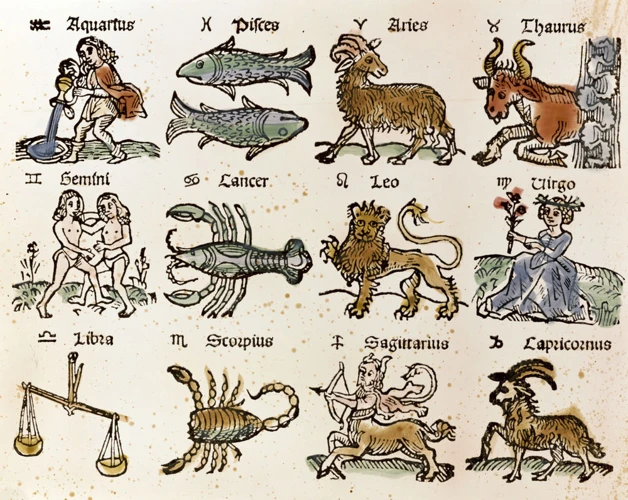
The power of animal symbolism lies in its ability to transcend language and cultural barriers, resonating with human emotions and experiences on a visceral level. Animals have been revered as symbols of strength, wisdom, and divine power since ancient times. In many mythologies, animals are seen as intermediaries between the earthly realm and the spiritual world, possessing traits and qualities that humans aspire to attain. For example, the majestic lion represents courage and nobility in many cultures, while the snake is associated with transformation and healing. These symbolic associations not only provide deeper meaning to mythological tales but also serve as guides for believers, inspiring them to embody the qualities exemplified by these animals. Whether it is the loyalty of a wolf pack or the agility of a cheetah, the power of animal symbolism lies in its ability to connect humans with the primal forces of nature and tap into a collective consciousness that transcends time and space.
Animals as Deities and Guardians
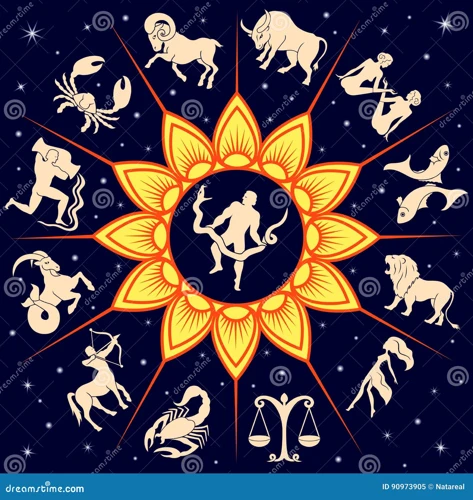
Animals hold a significant place in mythology as revered deities and guardians. In various mythological traditions, gods and goddesses take the form of animals, embodying their characteristics and powers. In Egyptian mythology, the cat-headed goddess Bastet symbolizes protection, fertility, and the sun’s benevolent aspects. Norse mythology showcases fierce and powerful beings like the wolf Fenrir and the serpent Jormungandr, who act as guardians of the divine realm. Similarly, Hindu mythology depicts gods such as Lord Ganesh, who possesses the head of an elephant, representing wisdom, intellect, and overcoming obstacles. These animals, revered as deities, offer guidance, protection, and blessings to believers. They serve as intermediaries between the mortal realm and the divine, ensuring harmony and balance in the cosmos. Exploring the rich tapestry of animal deities and guardians in mythologies allows us to better understand the profound relationship between humans and nature and the spiritual significance bestowed upon these majestic creatures.
1. Egyptian Mythology
In Egyptian mythology, animals held immense spiritual significance and were often associated with specific gods and goddesses. The cat, for example, was revered as a symbol of protection and was closely linked to the goddess Bastet. Bastet, the goddess of home, fertility, and protection, was often depicted with the head of a lioness or a domestic cat. Cats were considered sacred animals, and harming or killing a cat, even accidentally, was a grave offense in ancient Egypt.
Another prominent animal symbol in Egyptian mythology is the scarab beetle. The scarab beetle was associated with the sun god Ra and represented creation, transformation, and rebirth. The Egyptians believed that the scarab beetle rolled the sun across the sky, much like how the beetle rolls its dung to create a new life. The amulets in the shape of scarab beetles were popular and believed to bring good luck and protection.
Additionally, the falcon held great significance in Egyptian mythology. The falcon was associated with the sky god Horus and symbolized divine kingship and protection. Horus, depicted as a falcon-headed deity, was worshipped as the patron god of pharaohs and represented royal power and wisdom.
These animal symbols in Egyptian mythology not only represented specific deities but also conveyed important concepts such as protection, creation, and divine authority. The Egyptians believed that invoking the power of these animal symbols brought them closer to the gods and provided them with divine blessings and guidance throughout their lives. The intriguing world of Egyptian mythology is rich with animal symbolism, revealing the deep reverence and spiritual connection that the ancient Egyptians had with the natural world.
2. Norse Mythology
In Norse mythology, animals hold significant symbolism and are deeply ingrained in the cosmology and legends of the Norse gods and heroes. The raven, for instance, is closely associated with Odin, the chief god. Odin possesses two ravens, Huginn (thought) and Muninn (memory), who fly across the Nine Worlds gathering information and knowledge to share with Odin. The wolf is another powerful symbol in Norse mythology, representing ferocity, cunning, and primal instincts. Fenrir, a monstrous wolf, plays a crucial role in the Ragnarok, the apocalyptic battle of the gods. The serpent Jormungandr, a gigantic sea serpent, is another prominent creature in Norse mythology. It is believed to encircle Midgard, the realm of humans, symbolizing the chaotic and unpredictable forces of nature. Along with these iconic animals, other creatures like dragons and falcons also appear in Norse mythology as symbols of power and transformation. The rich imagery of animals in Norse mythology reflects the Vikings’ deep connection with the natural world and their reverence for the wild and untamed forces of nature. To explore more about the fascinating legends of Norse mythology, you can read our article on the legend of King Arthur and the Knights of the Round Table.
3. Hindu Mythology
In Hindu mythology, animals hold significant roles as symbols of divine power and spiritual significance. One prominent example is the cow, which holds a sacred status in Hindu culture. Known as the holy gau mata, the cow is revered as a motherly figure and a symbol of abundance, fertility, and sustenance. It is considered a gentle and giving creature, embodying the qualities of nurturing and selflessness. The elephant is another animal that carries deep symbolism in Hinduism. A widely recognized symbol of wisdom and prosperity, the elephant is associated with Lord Ganesha, the deity of intellect and good fortune. Lord Ganesha himself is depicted with an elephant’s head, symbolizing his immense wisdom and strength. In various Hindu scriptures and mythological tales, other animals such as the snake and the monkey also hold important roles and represent different aspects of divinity and spirituality. The snake represents transformative energy and is associated with Lord Shiva, while the monkey symbolizes intelligence and playfulness, often depicted through the story of Lord Hanuman’s heroic deeds. The animals in Hindu mythology reflect the interconnectedness of all living beings and serve as reminders of the divine forces that shape the world.
Manifestations of Animal Symbolism
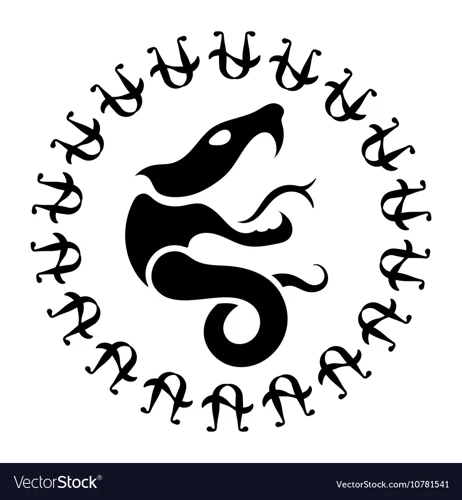
Manifestations of animal symbolism in mythology can be observed through various themes and motifs that appear across different cultures and mythological traditions. One prominent manifestation is in creation and origin myths, where animals often play a central role in the formation of the world. For example, in Norse mythology, the creation of the world is intricately linked to the existence of the World Serpent known as Jormungandr. In Greek mythology, the goddess Athena was born from the forehead of Zeus, accompanied by her sacred animal, the wise owl. Animals are also prominent in tales of heroes and transformation, where they represent both the inner qualities and external manifestations of the heroic journey. The story of King Arthur and the Knights of the Round Table is replete with animal symbolism, with each knight being associated with a specific animal that embodies their virtues and attributes. Finally, animals are often depicted as divine messengers and omens, delivering messages from the gods or foretelling significant events. In ancient Chinese mythology, the legendary phoenix symbolizes renewal and rebirth, and its appearance is believed to herald a time of peace and prosperity. Through these various manifestations, animal symbolism in mythology serves as a rich tapestry of stories and teachings that illuminate the complexity of human existence and our connection to the natural world.
1. Creation and Origin Myths
Creation and origin myths across different cultures often incorporate animals as key figures in their narratives. These myths seek to explain how the world and everything in it came to be, and animals play an integral role in this process. In many Native American creation myths, the raven is a central figure, revered for its intelligence and cunning. The raven is often depicted as the bringer of light or the one who releases humans from a primordial darkness. Similarly, in ancient Hindu mythology, the cosmic serpent known as Shesha is believed to be responsible for the creation and preservation of the universe. This serpent deity symbolizes the eternal cycle of life and death, representing the dualistic nature of existence. These stories highlight the significance of animals in the creation and origin myths, serving as catalysts or divine beings shaping the very foundation of the world. Through these myths, cultures impart a sense of awe and reverence for the natural world, recognizing the profound connection between humans and animals in the grand tapestry of creation.
2. Heroes and Transformation
In mythological narratives, heroes often undergo transformative journeys that are closely linked to animal symbolism. These stories draw parallels between the hero’s personal growth and the characteristics of specific animals, highlighting the universal themes of resilience, courage, and self-discovery. The hero’s encounters with animals serve as catalysts for their transformation and provide valuable lessons along the way. For instance, in the famous story of Hercules from Greek mythology, his Twelve Labors involve facing and overcoming various formidable creatures, such as the Nemean Lion and the Hydra. Each encounter tests his strength, endurance, and moral character, ultimately shaping him into a hero of legendary status. Similarly, in the Arthurian legends, the knight Gawain embarks on a quest where he confronts numerous animal-related challenges, including a fearsome lion and a cunning fox. Through these encounters, Gawain learns important lessons about bravery, loyalty, and humility. These stories of heroes and transformation serve as allegories for the human journey through life, highlighting the significance of facing challenges, learning from them, and emerging stronger and wiser on the other side. They remind us that our own personal growth and transformation can be mirrored in the animal kingdom, reinforcing the profound connection between humans and the natural world. For more enticing legends, you can explore some of the fascinating tales in Greek mythology.
3. Divine Messengers and Omens
In many mythologies, animals are seen as divine messengers and omens. They are believed to possess a special connection to the spiritual realm and often serve as a means of communication between the gods and humans. For example, in Greek mythology, the owl is associated with the goddess Athena and is seen as a symbol of wisdom and insight. Its nocturnal nature and ability to see in the dark represent the ability to perceive hidden truths and navigate through the unknown. In Native American cultures, the appearance of certain animals, such as the hawk or the deer, is believed to be a sign from the spirit world. These animals are seen as messengers carrying important messages or warnings from the gods or ancestors. The interpretation of these omens and messages often requires keen observation and intuition, as different animals have different meanings and significance in different cultures. Whether it is an ancient prophecy carried by a raven or a serpent’s appearance as a harbinger of change, the presence of these divine messengers and omens in mythology adds an element of mystery and anticipation, reminding us of the mystical connections between the human and divine realms.
Animal Symbolism in Different Cultures
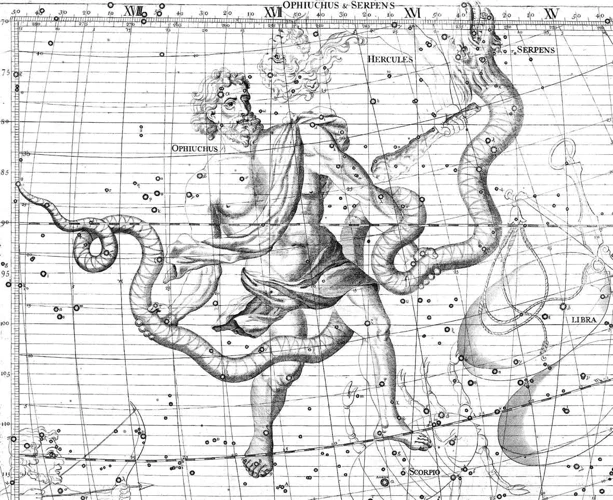
Animals have always held a special place in the mythologies of different cultures, each with their unique interpretations and symbolism. In Ancient Greek Mythology, for example, animals played prominent roles, representing various gods and goddesses. The wise and powerful owl was associated with Athena, the goddess of wisdom, while the fierce and cunning serpent was linked to the god Apollo. Native American mythologies also assigned deep meaning to animals, viewing them as spiritual beings and guides. The eagle, revered for its strength and vision, was seen as a symbol of divine connection and higher perspective. In Chinese mythology, animals like the majestic dragon and the wise crane embodied qualities such as power, longevity, and balance. These varied interpretations of animal symbolism across different cultures not only highlight the rich diversity of human beliefs but also provide insight into the way these societies perceived and revered the natural world. (Internal link: exploring-astrological-traits-famous-ophiuchus-personalities)
1. Ancient Greek Mythology
In Ancient Greek mythology, animals played a prominent role in symbolizing various gods and goddesses, as well as representing key aspects of the natural world. One prominent example is the owl, which was associated with Athena, the goddess of wisdom. The owl’s ability to see in the dark and its wise demeanor made it a fitting symbol for Athena, who was often depicted with an owl perched on her shoulder. The eagle was another important animal symbol in Greek mythology, representing Zeus, the king of the gods. The eagle’s majestic flight and powerful presence conveyed Zeus’ authority and dominion over the heavens. Additionally, the dolphin held great significance in Greek mythology, symbolizing the god Apollo. Dolphins were believed to be messengers of Apollo and were often depicted alongside him in artwork and stories. These animal symbols not only represented the gods and goddesses but also conveyed deeper meanings associated with their respective domains and attributes. By incorporating animals as symbols, Ancient Greek mythology offered a rich tapestry of imagery and allegory that continues to captivate and inspire us today. Learn more about the fascinating world of Greek mythology by exploring the legends of Greek mythology.
2. Native American Mythology
Native American mythology is rich with animal symbolism, as animals hold a significant place in their spiritual beliefs and cultural traditions. In Native American mythology, animals are seen as sacred beings and powerful spirits who play various roles in creation stories and legends. The bald eagle is revered as a symbol of strength, freedom, and wisdom. It is believed to carry messages between the earthly and spiritual realms. The bison represents abundance and provides sustenance for tribes, while the wolf embodies loyalty, teamwork, and intuition. The raven is often associated with creation and transformation, symbolizing intelligence, trickery, and adaptability. Native American tribes often incorporate animal motifs in their rituals, dances, and art to honor and connect with these spiritual entities. Animal symbolism in Native American mythology teaches the importance of respecting and living in harmony with nature, as well as the interdependence between humans and the animal kingdom. Understanding and honoring these symbols is essential to maintaining the spiritual balance and connection with the natural world that Native American cultures deeply value.
3. Chinese Mythology
In Chinese mythology, animals hold significant symbolism and are deeply ingrained in cultural beliefs and traditions. Each animal is associated with specific qualities and attributes that shape the mythology and spiritual practices of the Chinese people. One prominent figure in Chinese mythology is the Dragon, which symbolizes power, strength, and good fortune. Considered the most powerful and auspicious creature, the Dragon is often associated with the Emperor and represents imperial authority. Another animal of great importance in Chinese mythology is the Phoenix, which symbolizes beauty, harmony, and rebirth. The Phoenix is believed to bring peace and prosperity when it appears, and its presence is often associated with the rise of a great ruler or the start of a new era. Additionally, the Turtle is highly revered in Chinese folklore for its longevity, wisdom, and stability. It is often seen as a symbol of immortality and is associated with good luck and protection. The varied symbolism of animals in Chinese mythology reflects the intricate relationship between humans, nature, and the spiritual realm, serving as a guide for moral conduct and offering insights into the interconnectedness of all living beings.
Lessons and Moral Teachings
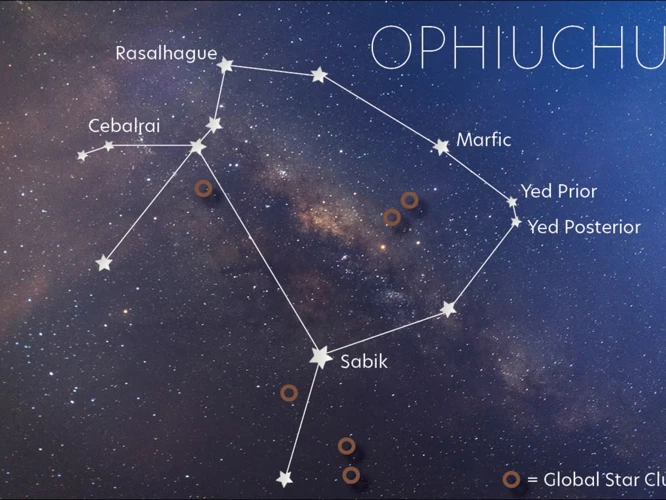
Animals in mythology often serve as powerful teachers, imparting valuable lessons and moral teachings to humanity. Through their actions and characteristics, animals offer insights into virtues and qualities that humans should strive to embody. For example, the loyalty and bravery of a dog can remind us of the importance of unwavering loyalty to our loved ones and the strength to confront challenges head-on. Similarly, the cunning and trickery of a fox can teach us the value of resourcefulness and adaptability in navigating life’s obstacles. Animals also symbolize balance and harmony, such as the yin and yang represented by the dragon and phoenix in Chinese mythology. These lessons and moral teachings found in animal symbolism encourage individuals to reflect upon their own behaviors and strive for personal growth and enlightenment, fostering a deeper understanding of our interconnectedness with the natural world.
1. Loyalty and Bravery
Loyalty and bravery are fundamental themes often associated with animal symbolism in mythology. Across different cultures, animals such as the wolf, lion, and dog exemplify these virtues. In ancient Roman mythology, the she-wolf was a symbol of nurturing and loyalty, as she nursed and protected the orphaned twins Romulus and Remus, who went on to found Rome. The lion is a prominent symbol of loyalty and bravery in multiple mythologies. In ancient Egypt, the lion-headed goddess Sekhmet was revered for her fierce loyalty to the sun god, Ra, and her role as a protector. The dog is another animal often associated with loyalty and bravery. In Norse mythology, the wolf-like creature Fenrir remained loyal to his father, the trickster god Loki, even though his fate ultimately led to his imprisonment. These animal symbols of loyalty and bravery serve as reminders to humans of the importance of standing by loved ones, facing challenges with courage, and remaining steadfast in the face of adversity.
2. Cunning and Trickery
In mythology, the theme of cunning and trickery is often embodied by certain animals, emphasizing their intelligence and strategic thinking. These creatures, known for their cleverness and ability to outwit others, serve as symbolic representations of cunning and trickery. One prominent example is the fox, which appears in various mythologies as a symbol of slyness and deceit. In Native American folklore, the fox is a cunning trickster figure, known for outsmarting other animals and humans alike. Similarly, in Aesop’s fables, the fox is often portrayed as a clever schemer, using its wit to acquire what it desires. Another animal associated with cunning is the raven. In Norse mythology, the raven is closely linked to the god Odin and is seen as a symbol of intelligence and foresight. The raven’s ability to communicate and its playful nature make it an embodiment of cunning and trickery. By using these animal symbols in mythology, cultures impart lessons about the power of wit and strategy in overcoming challenges, highlighting the importance of cleverness and adaptability in navigating the complexities of life.
3. Balance and Harmony
In various mythologies, animals are often associated with the idea of balance and harmony. They represent the delicate equilibrium that exists in the natural world and can serve as reminders for humans to strive for balance in their own lives. For example, in Native American mythology, the bear symbolizes strength, introspection, and the importance of finding balance between solitude and social interaction. The yin and yang symbolism in Chinese mythology represents the harmonious interplay between opposing forces, with the dragon representing the yang and the phoenix representing the yin. This concept of balance and harmony in the animal kingdom provides valuable lessons for humans, encouraging us to find equilibrium within ourselves, our relationships, and the world around us. By observing the behaviors and qualities of these symbolic animals, we can learn to navigate life’s challenges with grace and find inner peace amidst the chaos.
Conclusion
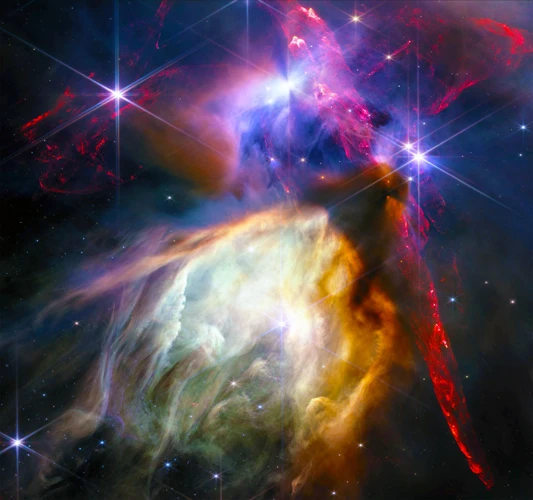
In conclusion, animals hold a significant place in mythology as powerful symbols that speak to the human imagination and our deep connection with the natural world. The power of animal symbolism lies in its ability to convey abstract concepts and universal truths through relatable and tangible representations. Whether it’s the regal lion, the wise owl, or the cunning fox, animals are used in mythologies across cultures to embody virtues, embody deities, and convey important moral lessons. They serve as guardians, messengers, and bringers of wisdom. Animal symbolism is not only a reflection of our perceptions and beliefs about the animal kingdom but also a mirror that reflects our own values, fears, and aspirations. By studying the role of animals in mythology, we gain a deeper understanding of the human psyche and the timeless narratives that have shaped our collective consciousness. Through the ages, animals have guided us, taught us, and inspired awe in their majestic forms. As we explore the rich tapestry of animal symbolism in mythologies around the world, we recognize the intricate relationship between humans and the creatures with whom we share this planet. The significance of animal symbolism reminds us of the awe-inspiring wonders of the natural world and the profound lessons that lie within its creatures.
Frequently Asked Questions
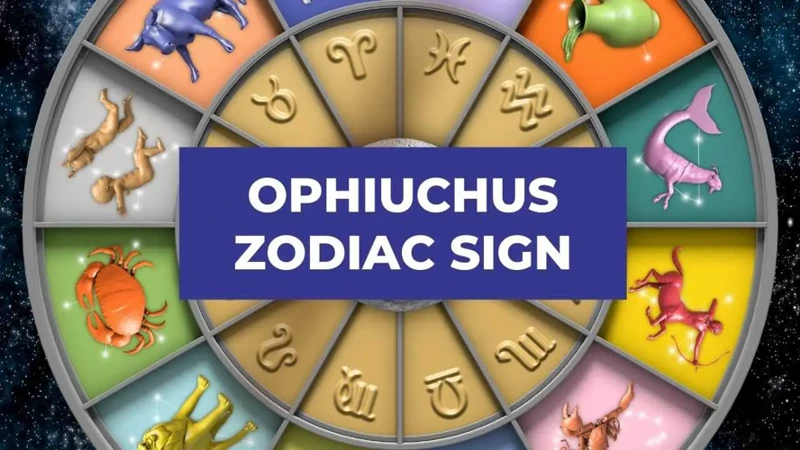
1. What is the significance of animal symbols in mythology?
The significance of animal symbols in mythology is to represent and convey profound concepts, characteristics, and values that humans aspire to or identify with. Animals serve as embodiments of wisdom, strength, cunning, and various other qualities that are integral to the mythological narratives.
2. How do animals serve as deities in mythology?
In mythology, animals often personify deities and are worshipped as sacred beings. They are believed to possess divine powers and are revered as guardians, protectors, and guides. They symbolize the connection between the natural and supernatural realms.
3. What are some examples of animal symbolism in Egyptian mythology?
In Egyptian mythology, animals held great significance. For instance, the falcon represented the god Horus, who symbolized kingship and divine protection, while the cat was associated with the goddess Bastet, representing fertility and protection against evil.
4. How are animals portrayed in Norse mythology?
Norse mythology often depicts animals as mythical creatures with great power. The wolf Fenrir is a central figure representing chaos and destruction, while the raven is associated with Odin, the god of wisdom, war, and death.
5. What roles do animals play in Hindu mythology?
Animals hold various roles in Hindu mythology. The sacred cow is considered the symbol of divine and natural beneficence, while the elephant-headed god Ganesha is revered as the remover of obstacles and the bestower of blessings.
6. How do creation and origin myths incorporate animal symbolism?
In creation and origin myths, animals often play significant roles. They may symbolize the various forces of nature, represent the primeval elements, or embody the creative powers that shaped the world.
7. What do divine messengers and omens signify in mythology?
Divine messengers, often in the form of animals, serve as intermediaries between the gods and humans. They bring important messages, warnings, or prophecies, and their appearances or behavior are interpreted as significant omens.
8. How does Greek mythology incorporate animal symbolism?
Greek mythology is rife with animal symbolism. For instance, the owl represents wisdom and knowledge, while the phoenix symbolizes rebirth and immortality. Animals are often depicted as companions or transformations of gods and heroes.
9. What roles do animals play in Native American mythology?
In Native American mythology, animals are considered both spiritual and physical beings. They are seen as teachers, protectors, and guides, embodying the relationship between humans and the natural world.
10. How is animal symbolism portrayed in Chinese mythology?
In Chinese mythology, animals are seen as powerful symbols of luck, prosperity, and spiritual attributes. The dragon represents strength and good fortune, while the phoenix symbolizes femininity and grace.
References
Frequently Asked Questions

1. What is animal symbolism in mythology?
Animal symbolism in mythology refers to the practice of attributing symbolic meanings and associations to various animals. It is believed that animals possess unique qualities and characteristics that can represent ideas, emotions, and themes in myths and legends.
2. Why are animals commonly used as symbols in mythology?
Animals are commonly used as symbols in mythology because they are easily recognizable and relatable to humans. They often embody certain traits, such as strength, wisdom, or cunning, which make them powerful metaphors for expressing complex ideas and concepts.
3. How are animals portrayed as deities and guardians in mythology?
In various mythologies, animals are worshipped as deities or revered as guardians. They are believed to possess supernatural powers and serve as protectors of certain domains or aspects of life. For example, the Egyptian goddess Bastet was depicted as a lioness and was associated with protection and fertility.
4. What are some examples of animals in Egyptian mythology?
In Egyptian mythology, animals played significant roles. The scarab beetle symbolized the sun god Ra and the cycle of rebirth, while the jackal-headed god Anubis was associated with the afterlife and mummification. The sacred cow, Hathor, represented motherhood and feminine power.
5. How are animals represented in Norse mythology?
In Norse mythology, animals often represented various gods and creatures. The serpent Jormungandr symbolized chaos and the end of the world, while the ravens Huginn and Muninn represented thought and memory, accompanying the god Odin.
6. What animals hold symbolic significance in Hindu mythology?
Hindu mythology is rich in animal symbolism. The cow is considered sacred and represents fertility and abundance. The monkey god Hanuman symbolizes strength and devotion, while the snake god Shesha represents cosmic balance and protection.
7. How do animals feature in creation and origin myths?
In many creation and origin myths, animals are integral to the story. They may be seen as the ancestors of humans or act as catalysts for the creation of the world. For example, in the ancient Greek creation myth, the world was formed from the chaos represented by the snake-like creature, Ophion.
8. What is the significance of animals as heroes and in transformation stories?
Animals often become heroes or undergo transformative journeys in mythological stories. They represent personal growth, resilience, and the power to overcome challenges. In the story of the Greek hero Hercules, his twelve labors include capturing and taming various animals, symbolizing the triumph of human strength and courage.
9. Which animals are prominent in Native American mythology?
Native American mythology includes numerous animals with symbolic meaning. The eagle is revered for its connection to the spiritual realm and represents wisdom and vision. The bear symbolizes strength, healing, and introspection, while the coyote is often associated with mischief and transformation.
10. How are animals associated with moral teachings in mythology?
Animals in mythology often convey moral teachings and life lessons. Loyalty and bravery can be exemplified through the story of the dog-like creature, Cerberus, guarding the gates of the Underworld in Greek mythology. The cunning and trickery of the fox in various mythologies serve as cautionary tales about deceit and manipulation. The delicate balance and harmony of nature are often represented by animals like the yin-yang symbol in Chinese mythology.






